Xiang Kong
Mutual Reinforcement of LLM Dialogue Synthesis and Summarization Capabilities for Few-Shot Dialogue Summarization
Feb 24, 2025Abstract:In this work, we propose Mutual Reinforcing Data Synthesis (MRDS) within LLMs to improve few-shot dialogue summarization task. Unlike prior methods that require external knowledge, we mutually reinforce the LLM\'s dialogue synthesis and summarization capabilities, allowing them to complement each other during training and enhance overall performances. The dialogue synthesis capability is enhanced by directed preference optimization with preference scoring from summarization capability. The summarization capability is enhanced by the additional high quality dialogue-summary paired data produced by the dialogue synthesis capability. By leveraging the proposed MRDS mechanism, we elicit the internal knowledge of LLM in the format of synthetic data, and use it to augment the few-shot real training dataset. Empirical results demonstrate that our method improves dialogue summarization, achieving a 1.5% increase in ROUGE scores and a 0.3% improvement in BERT scores in few-shot settings. Furthermore, our method attains the highest average scores in human evaluations, surpassing both the pre-trained models and the baselines fine-tuned solely for summarization tasks.
TIS-DPO: Token-level Importance Sampling for Direct Preference Optimization With Estimated Weights
Oct 06, 2024

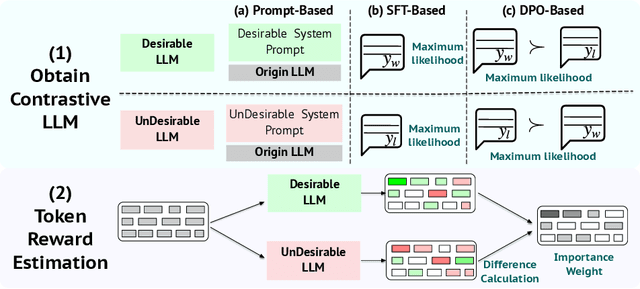
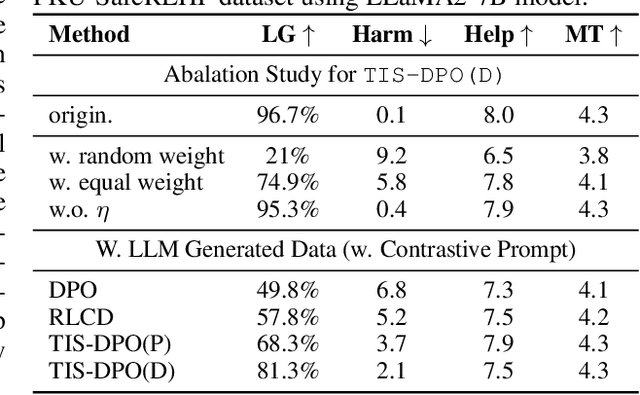
Abstract:Direct Preference Optimization (DPO) has been widely adopted for preference alignment of Large Language Models (LLMs) due to its simplicity and effectiveness. However, DPO is derived as a bandit problem in which the whole response is treated as a single arm, ignoring the importance differences between tokens, which may affect optimization efficiency and make it difficult to achieve optimal results. In this work, we propose that the optimal data for DPO has equal expected rewards for each token in winning and losing responses, as there is no difference in token importance. However, since the optimal dataset is unavailable in practice, we propose using the original dataset for importance sampling to achieve unbiased optimization. Accordingly, we propose a token-level importance sampling DPO objective named TIS-DPO that assigns importance weights to each token based on its reward. Inspired by previous works, we estimate the token importance weights using the difference in prediction probabilities from a pair of contrastive LLMs. We explore three methods to construct these contrastive LLMs: (1) guiding the original LLM with contrastive prompts, (2) training two separate LLMs using winning and losing responses, and (3) performing forward and reverse DPO training with winning and losing responses. Experiments show that TIS-DPO significantly outperforms various baseline methods on harmlessness and helpfulness alignment and summarization tasks. We also visualize the estimated weights, demonstrating their ability to identify key token positions.
Step-by-Step Reasoning for Math Problems via Twisted Sequential Monte Carlo
Oct 02, 2024



Abstract:Augmenting the multi-step reasoning abilities of Large Language Models (LLMs) has been a persistent challenge. Recently, verification has shown promise in improving solution consistency by evaluating generated outputs. However, current verification approaches suffer from sampling inefficiencies, requiring a large number of samples to achieve satisfactory performance. Additionally, training an effective verifier often depends on extensive process supervision, which is costly to acquire. In this paper, we address these limitations by introducing a novel verification method based on Twisted Sequential Monte Carlo (TSMC). TSMC sequentially refines its sampling effort to focus exploration on promising candidates, resulting in more efficient generation of high-quality solutions. We apply TSMC to LLMs by estimating the expected future rewards at partial solutions. This approach results in a more straightforward training target that eliminates the need for step-wise human annotations. We empirically demonstrate the advantages of our method across multiple math benchmarks, and also validate our theoretical analysis of both our approach and existing verification methods.
Apple Intelligence Foundation Language Models
Jul 29, 2024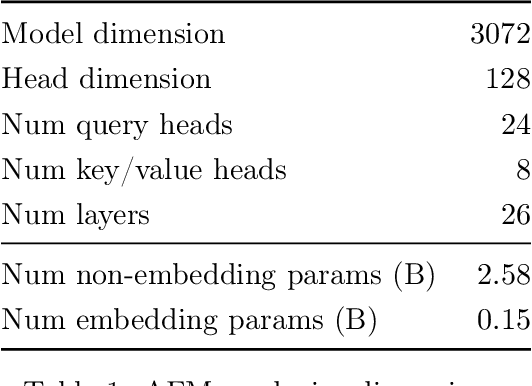
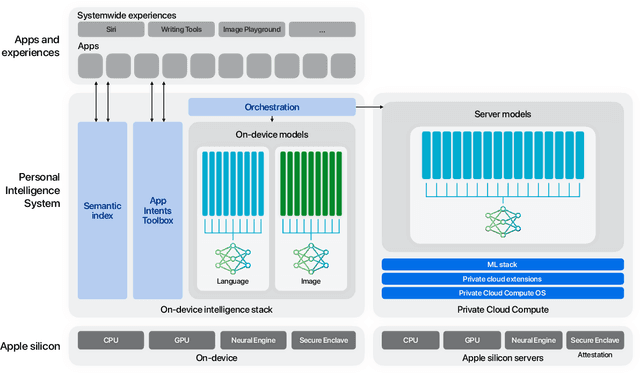

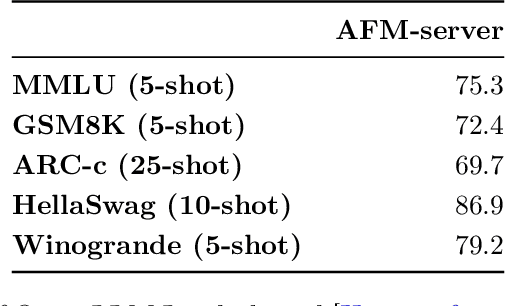
Abstract:We present foundation language models developed to power Apple Intelligence features, including a ~3 billion parameter model designed to run efficiently on devices and a large server-based language model designed for Private Cloud Compute. These models are designed to perform a wide range of tasks efficiently, accurately, and responsibly. This report describes the model architecture, the data used to train the model, the training process, how the models are optimized for inference, and the evaluation results. We highlight our focus on Responsible AI and how the principles are applied throughout the model development.
Large Language Model-guided Document Selection
Jun 07, 2024



Abstract:Large Language Model (LLM) pre-training exhausts an ever growing compute budget, yet recent research has demonstrated that careful document selection enables comparable model quality with only a fraction of the FLOPs. Inspired by efforts suggesting that domain-specific training document selection is in fact an interpretable process [Gunasekar et al., 2023], as well as research showing that instruction-finetuned LLMs are adept zero-shot data labelers [Gilardi et al.,2023], we explore a promising direction for scalable general-domain document selection; employing a prompted LLM as a document grader, we distill quality labels into a classifier model, which is applied at scale to a large, and already heavily-filtered, web-crawl-derived corpus autonomously. Following the guidance of this classifier, we drop 75% of the corpus and train LLMs on the remaining data. Results across multiple benchmarks show that: 1. Filtering allows us to quality-match a model trained on the full corpus across diverse benchmarks with at most 70% of the FLOPs, 2. More capable LLM labelers and classifier models lead to better results that are less sensitive to the labeler's prompt, 3. In-context learning helps to boost the performance of less-capable labeling models. In all cases we use open-source datasets, models, recipes, and evaluation frameworks, so that results can be reproduced by the community.
Revisiting MoE and Dense Speed-Accuracy Comparisons for LLM Training
May 23, 2024



Abstract:Mixture-of-Experts (MoE) enjoys performance gain by increasing model capacity while keeping computation cost constant. When comparing MoE to dense models, prior work typically adopt the following setting: 1) use FLOPs or activated parameters as a measure of model complexity; 2) train all models to the same number of tokens. We argue that this setting favors MoE as FLOPs and activated parameters do not accurately measure the communication overhead in sparse layers, leading to a larger actual training budget for MoE. In this work, we revisit the settings by adopting step time as a more accurate measure of model complexity, and by determining the total compute budget under the Chinchilla compute-optimal settings. To efficiently run MoE on modern accelerators, we adopt a 3D sharding method that keeps the dense-to-MoE step time increase within a healthy range. We evaluate MoE and dense LLMs on a set of nine 0-shot and two 1-shot English tasks, as well as MMLU 5-shot and GSM8K 8-shot across three model scales at 6.4B, 12.6B, and 29.6B. Experimental results show that even under these settings, MoE consistently outperform dense LLMs on the speed-accuracy trade-off curve with meaningful gaps. Our full model implementation and sharding strategy will be released at~\url{https://github.com/apple/axlearn}
MM1: Methods, Analysis & Insights from Multimodal LLM Pre-training
Mar 22, 2024



Abstract:In this work, we discuss building performant Multimodal Large Language Models (MLLMs). In particular, we study the importance of various architecture components and data choices. Through careful and comprehensive ablations of the image encoder, the vision language connector, and various pre-training data choices, we identified several crucial design lessons. For example, we demonstrate that for large-scale multimodal pre-training using a careful mix of image-caption, interleaved image-text, and text-only data is crucial for achieving state-of-the-art (SOTA) few-shot results across multiple benchmarks, compared to other published pre-training results. Further, we show that the image encoder together with image resolution and the image token count has substantial impact, while the vision-language connector design is of comparatively negligible importance. By scaling up the presented recipe, we build MM1, a family of multimodal models up to 30B parameters, including both dense models and mixture-of-experts (MoE) variants, that are SOTA in pre-training metrics and achieve competitive performance after supervised fine-tuning on a range of established multimodal benchmarks. Thanks to large-scale pre-training, MM1 enjoys appealing properties such as enhanced in-context learning, and multi-image reasoning, enabling few-shot chain-of-thought prompting.
Direct Large Language Model Alignment Through Self-Rewarding Contrastive Prompt Distillation
Feb 19, 2024Abstract:Aligning large language models (LLMs) with human expectations without human-annotated preference data is an important problem. In this paper, we propose a method to evaluate the response preference by using the output probabilities of response pairs under contrastive prompt pairs, which could achieve better performance on LLaMA2-7B and LLaMA2-13B compared to RLAIF. Based on this, we propose an automatic alignment method, Direct Large Model Alignment (DLMA). First, we use contrastive prompt pairs to automatically generate preference data. Then, we continue to evaluate the generated preference data using contrastive prompt pairs and calculate a self-rewarding score. Finally, we use the DPO algorithm to effectively align LLMs by combining this self-rewarding score. In the experimental stage, our DLMA method could surpass the \texttt{RLHF} method without relying on human-annotated preference data.
Mega: Moving Average Equipped Gated Attention
Sep 26, 2022



Abstract:The design choices in the Transformer attention mechanism, including weak inductive bias and quadratic computational complexity, have limited its application for modeling long sequences. In this paper, we introduce Mega, a simple, theoretically grounded, single-head gated attention mechanism equipped with (exponential) moving average to incorporate inductive bias of position-aware local dependencies into the position-agnostic attention mechanism. We further propose a variant of Mega that offers linear time and space complexity yet yields only minimal quality loss, by efficiently splitting the whole sequence into multiple chunks with fixed length. Extensive experiments on a wide range of sequence modeling benchmarks, including the Long Range Arena, neural machine translation, auto-regressive language modeling, and image and speech classification, show that Mega achieves significant improvements over other sequence models, including variants of Transformers and recent state space models.
Multilingual Neural Machine Translation with Deep Encoder and Multiple Shallow Decoders
Jun 05, 2022
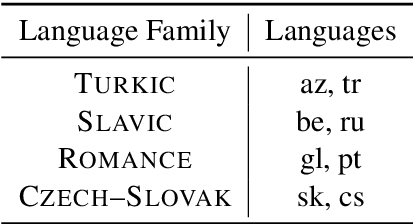
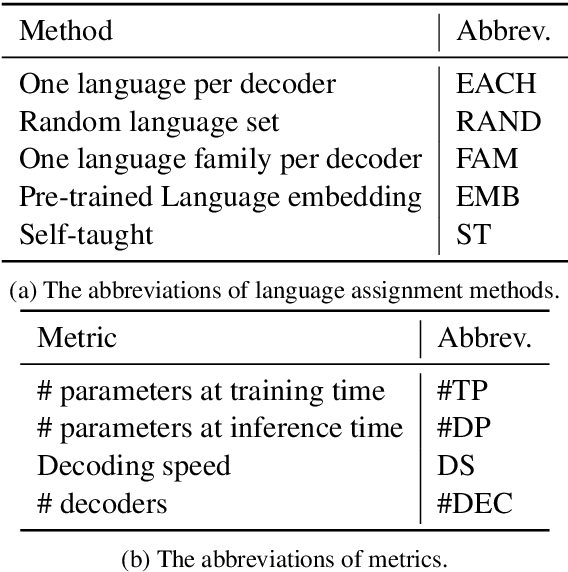
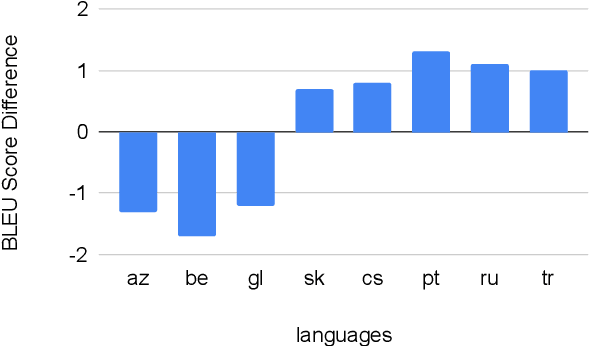
Abstract:Recent work in multilingual translation advances translation quality surpassing bilingual baselines using deep transformer models with increased capacity. However, the extra latency and memory costs introduced by this approach may make it unacceptable for efficiency-constrained applications. It has recently been shown for bilingual translation that using a deep encoder and shallow decoder (DESD) can reduce inference latency while maintaining translation quality, so we study similar speed-accuracy trade-offs for multilingual translation. We find that for many-to-one translation we can indeed increase decoder speed without sacrificing quality using this approach, but for one-to-many translation, shallow decoders cause a clear quality drop. To ameliorate this drop, we propose a deep encoder with multiple shallow decoders (DEMSD) where each shallow decoder is responsible for a disjoint subset of target languages. Specifically, the DEMSD model with 2-layer decoders is able to obtain a 1.8x speedup on average compared to a standard transformer model with no drop in translation quality.
 Add to Chrome
Add to Chrome Add to Firefox
Add to Firefox Add to Edge
Add to Edge